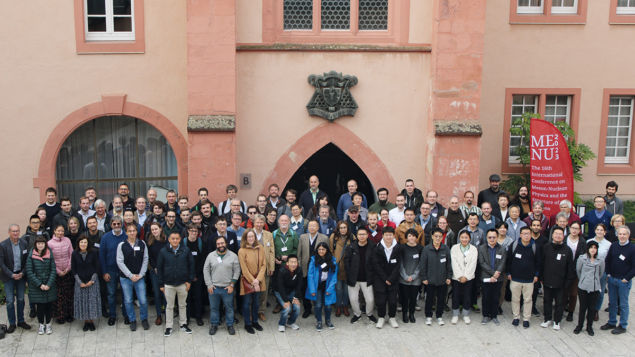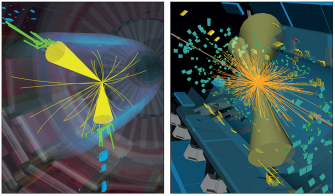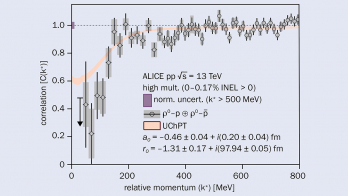
The triennial international conference on meson–nucleon physics and the structure of the nucleon (MENU) attracted more than 140 participants to the historic centre of Mainz from 16 to 20 October 2023.
Among MENU 2023’s highlights on nucleon structure, a preliminary analysis by the NNPDF collaboration suggests that the proton contains more charm than anticharm, with Niccolò Laurenti (Università degli Studi di Milano) showing evidence of a non-vanishing intrinsic valence charm contribution to the proton’s wavefunction. Meanwhile, Michael Kohl (Hampton University) concluded that the proton–radius puzzle is still not resolved. To make progress, form-factor measurements in electron scattering must be scrutinised, and the use of atomic spectroscopy data clarified, he said.
Hadron physics
A large part of this year’s conference was dedicated to hadron spectroscopy, with updates from Belle II, BESIII, GlueX, Jefferson Lab, JPAC, KLOE/KLOE-2 and LHCb, as well as theoretical overviews covering everything from lattice quantum chromodynamics to effective-field theories. Special emphasis was also given to future directions in hadron physics at future facilities such as FAIR, the Electron-Ion Collider and the local Mainz Energy-Recovering Superconducting Accelerator (MESA) facility – a future low-energy but high-intensity electron accelerator that will make it possible to carry out experiments in nuclear astrophysics, dark-sector searches and tests of the SM. Among upgrade plans at Jefferson Lab, Eric Voutier (Paris-Saclay) presented a future experimental programme with positron beams at CEBAF, the institute’s Continuous Electron Beam Accelerator Facility. The upgrade will allow for a rich physics programme covering two-photon exchange, generalised polarisabilities, generalised parton distribution functions and direct dark-matter searches.
Highlights on nucleon structure include a preliminary analysis suggesting that the proton contains more charm than anticharm
Hadron physics is also closely related to searches for new physics, as precision observables of the Standard Model are in many cases limited by the non-perturbative regime of quantum chromodynamics. A prime example is the physics of the anomalous magnetic moment of the muon, for which a puzzling discrepancy between data-driven dispersive and lattice–quantum chromodynamics calculations of hadronic contributions to the Standard Model prediction persists (CERN Courier May/June 2021 p25). The upcoming collaboration meeting of the Muon g-2 Theory Initiative in September 2024 at KEK will provide important new insights from lattice QCD and e+e– experiments. It remains to be seen whether the eventual theoretical consensus will confirm a significant deviation from the experimental value, which is currently being updated by Fermilab’s Muon g-2 experiment using their last three years of data.







